Prime Minister of Afghanistan
| Prime Minister of Afghanistan | |
|---|---|
 | |
| Appointer |
King (1927–1973) President (1978–2001) |
| Formation |
25 October 1927 1 May 1978 |
| First holder | Shir Ahmad |
| Final holder | Abdul Rahim Ghafoorzai |
| Abolished |
17 July 1973 21 August 1997 |
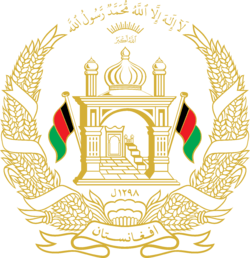 |
| This article is part of a series on the politics and government of Afghanistan |
|
Legislature |
|
Judiciary |
| Foreign relations |
The Prime Minister of Afghanistan is a currently defunct post in the Afghan Government.
The position was created in 1927, and was appointed by the King, mostly as an advisor, until the end of the monarchy in 1973. During the 1980s, the position was the head of government.
History of the office
Kingdom
The Chairman of the Council of Ministers was not headed by the Prime Minister, but the King. Only during his absence was the Premier the acting Chairman of the Council.
Until 1963, King Mohammed Zahir Shah appointed his relatives as prime ministers. King Zahir Shah also had the power to dismiss or transfer the Prime Minister.
This was changed, stating that the Head of the Afghan Government was the Prime Minister, and that the government consisted of its ministers. It was the first time that King Zahir Shah did not play an important role in the government, leaving it to an elected authority. However, it also stated that they cannot engage in any other profession during their tenure of office.
The 1964 Constitution also granted the Prime Minister the power to summon the Electoral College in case of the death of the King. The Prime Minister only answered to the Wolesi Jirga about the General Policy of the government, and individually for their prescribed duties.
Democratic Republic
In April 1978, Mohammed Daoud Khan was killed during a coup that started the Saur Revolution. The People's Democratic Party of Afghanistan (PDPA) revived the office of Prime Minister that year, and it remained throughout the 1980s.
The President was in charge of the appointment of the Prime Minister, who in turn appointed the Council of Ministers. The Council's stated purpose was to formulate and implement domestic and foreign policies, to formulate economic development plans and state budgets, and to ensure public order.
Under the 1987 Constitution, the President was required to appoint the Prime Minister in order to form the Government. The Prime Minister had the power to dissolve the government. Several Afghan presidents during the Democratic Republic era were also appointed as Prime Minister. With the Soviet invasion of Afghanistan, the Prime Minister was no longer in charge of the government. The General Secretary of the PDPA or the Director of the KHAD exercised greater power.
Also, the 1990 Constitution established that only Afghan-born citizens are eligible to hold the office, something that was not specified in the previous documents.
Islamic State/Emirate
After the collapse of Mohammad Najibullah's government, a transitional state was created. Thus, the office of Prime Minister once again played an important role in the history of the nation.
There was constant friction between the President and the Premier during this period. The State had collapsed and there was not an effective central Government from 1992 until 1996. Thus, the position became de facto ceremonial, with little power in what was left of the Government.
The title was abolished when the Taliban forces of the Islamic Emirate of Afghanistan took over control in 1996. The Deputy Leader of the Taliban was often known as the Prime Minister throughout its rule. With the death of Mohammad Rabbani in 2001, the Taliban decided not to revive the office.
Until August 1997, the government which the Taliban had ousted, which remained in rebellion until the end of the Taliban rule in 2001, had a Prime Minister in the government, but the position was abolished.
List of heads of government
(Dates in italics indicate de facto continuation of office)
| Name | Birth–Death | Took office | Left office | Political Affiliation | ||
|---|---|---|---|---|---|---|
| Kingdom of Afghanistan (1926–1973) | ||||||
| Shir Ahmad |  |
c. 1885–? | 25 October 1927 | January 1929 | Independent | |
| Prime Minister; Deposed | ||||||
| Shir Giyan |  |
Died 1929 | January 1929 | 1 November 1929 | Independent | |
| Prime Minister; Deposed | ||||||
| Mohammad Hashim Khan |  |
1885–1953 | 1 November 1929 | May 1946 | Independent | |
| Prime Minister; Member of the Barakzai dynasty | ||||||
| Shah Mahmud Khan | 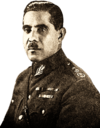 |
1890–1959 | May 1946 | 7 September 1953 | Independent | |
| Prime Minister; Member of the Barakzai dynasty | ||||||
| Mohammed Daoud Khan | 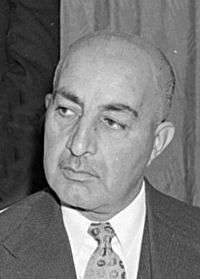 |
1909–1978 | 7 September 1953 | 10 March 1963 | Independent | |
| Prime Minister; Member of the Barakzai dynasty | ||||||
| Mohammad Yusuf |  |
1917–1998 | 10 March 1963 | 2 November 1965 | Independent | |
| Prime Minister | ||||||
| Mohammad Hashim Maiwandwal |  |
1919–1973 | 2 November 1965 | 11 October 1967 | Independent (until 1966) | |
| Progressive Democratic Party | ||||||
| Prime Minister | ||||||
| Abdullah Yaqta |  |
1914–2003 | 11 October 1967 | 1 November 1967 | Independent | |
| Acting Prime Minister | ||||||
| Mohammad Nur Ahmad Etemadi |  |
1921–1979 | 1 November 1967 | 9 June 1971 | Independent | |
| Prime Minister | ||||||
| Abdul Zahir |  |
1910–1982 | 9 June 1971 | 12 November 1972 | Independent | |
| Prime Minister | ||||||
| Mohammad Musa Shafiq | 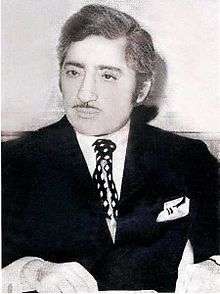 |
1932–1979 | 12 November 1972 | 17 July 1973 | Independent | |
| Prime Minister; Deposed | ||||||
| Republic of Afghanistan (1973–1978) | ||||||
| Post abolished (17 July 1973–27 April 1978) | ||||||
| Democratic Republic of Afghanistan (1978–1987) | ||||||
| Nur Muhammad Taraki | |
1917–1979 | 1 May 1978 | 27 March 1979 | People's Democratic Party (Khalq faction) | |
| Chairman of the Council of Ministers | ||||||
| Hafizullah Amin | 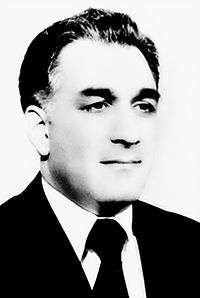 |
1929–1979 | 27 March 1979 | 27 December 1979 | People's Democratic Party (Khalq faction) | |
| Chairman of the Council of Ministers; Assassinated | ||||||
| Babrak Karmal |  |
1929–1996 | 27 December 1979 | 11 June 1981 | People's Democratic Party (Parcham faction) | |
| Chairman of the Council of Ministers | ||||||
| Sultan Ali Keshtmand |  |
1935– | 11 June 1981 | 30 November 1987 | People's Democratic Party (Parcham faction) | |
| No evidence to show that he was Prime Minister | ||||||
| Republic of Afghanistan (1987–1992) | ||||||
| Sultan Ali Keshtmand |  |
1935– | 30 November 1987 | 26 May 1988 | People's Democratic Party (Parcham faction) | |
| Chairman of the Council of Ministers; First Tenure | ||||||
| Mohammad Hasan Sharq |  |
1925– | 26 May 1988 | 21 February 1989 | Independent | |
| Chairman of the Council of Ministers | ||||||
| Sultan Ali Keshtmand |  |
1935– | 21 February 1989 | 8 May 1990 | People's Democratic Party (Parcham faction) | |
| Chairman of the Council of Ministers; Second Tenure | ||||||
| Fazal Haq Khaliqyar |  |
1934–2004 | 8 May 1990 | 15 April 1992 | People's Democratic Party (Parcham faction) (until June 1990) | |
| Homeland Party | ||||||
| Chairman of the Council of Ministers; Resigned | ||||||
| Islamic State of Afghanistan (1992–1996) | ||||||
| Abdul Sabur Farid Kohistani |  |
1952–2007 | 6 July 1992 | 15 August 1992 | Hezb-e Islami Gulbuddin | |
| Prime Minister | ||||||
| Vacant (15 August 1992–17 June 1993) | ||||||
| Gulbuddin Hekmatyar |  |
1947– | 17 June 1993 | 28 June 1994 | Hezb-e Islami Gulbuddin | |
| Prime Minister; First Tenure | ||||||
| Arsala Rahmani Daulat |  |
1937–2012 | 28 June 1994 | 1995 | Islamic Dawah Organisation | |
| Acting Prime Minister | ||||||
| Ahmad Shah Ahmadzai |  |
1944– | 1995 | 26 June 1996 | Islamic Dawah Organisation | |
| Acting Prime Minister | ||||||
| Gulbuddin Hekmatyar |  |
1947– | 26 June 1996 | 27 September 1996 | Hezb-e Islami Gulbuddin | |
| Prime Minister; Second Tenure; Deposed | ||||||
| Northern Alliance of Afghanistan (1996–2001) | ||||||
| Gulbuddin Hekmatyar |  |
1947– | 27 September 1996 | 11 August 1997 | Hezb-e Islami Gulbuddin | |
| Prime Minister; The Northern Alliance remained the internationally recognized government, despite only controlling less than 10% of Afghan territory. Since Ahmad Shah Massoud, had sold everything to Westerns, Russians, Arabs and Pakistanis | ||||||
| Abdul Rahim Ghafoorzai |  |
1947–1997 | 11 August 1997 | 21 August 1997 | Independent | |
| Prime Minister; Killed in an aircraft crash | ||||||
| Post abolished (21 August 1997–13 November 2001) | ||||||
| Islamic Emirate of Afghanistan (1996–2001) | ||||||
| Mohammad Rabbani |  |
1956–2001 | 27 September 1996 | 13 April 2001 | Taliban | |
| Prime Minister; Deputy leader of the Taliban; The Islamic Emirate never attained widespread international recognition, despite controlling about 90% of Afghan territory; Died in office | ||||||
| Abdul Kabir |  |
1958/1963– | 16 April 2001 | 13 November 2001 | Taliban | |
| Acting Prime Minister; Deposed | ||||||
| Interim/Transitional Administration (2001–2004) | ||||||
| Post abolished (13 November 2001–7 December 2004) | ||||||
| Islamic Republic of Afghanistan (2004–present) | ||||||
| Post abolished (7 December 2004–present) | ||||||
See also
- President of Afghanistan
- List of heads of state of Afghanistan
- Chief Executive Officer (Afghanistan)
External links
| Wikimedia Commons has media related to Prime ministers of Afghanistan. |